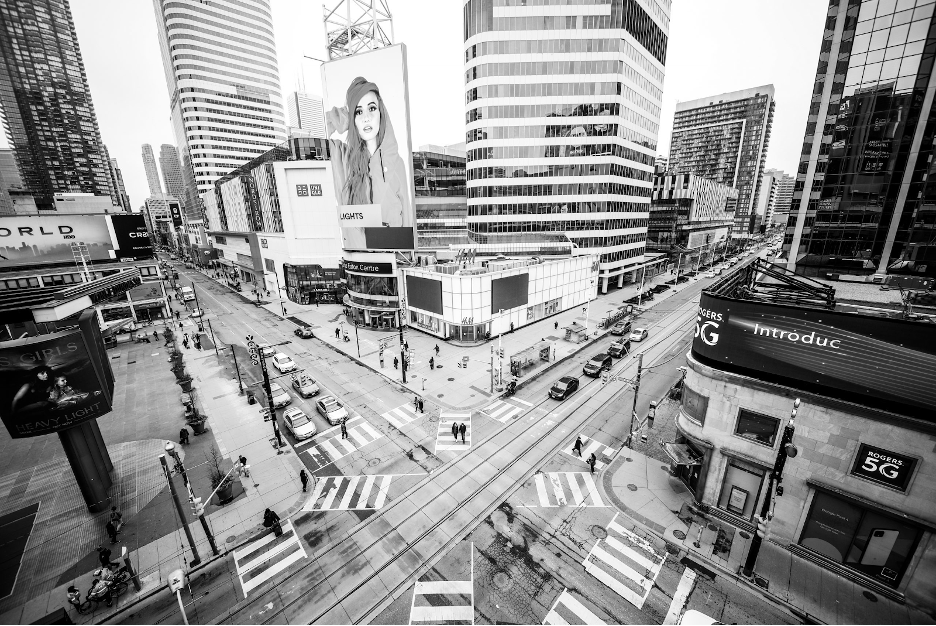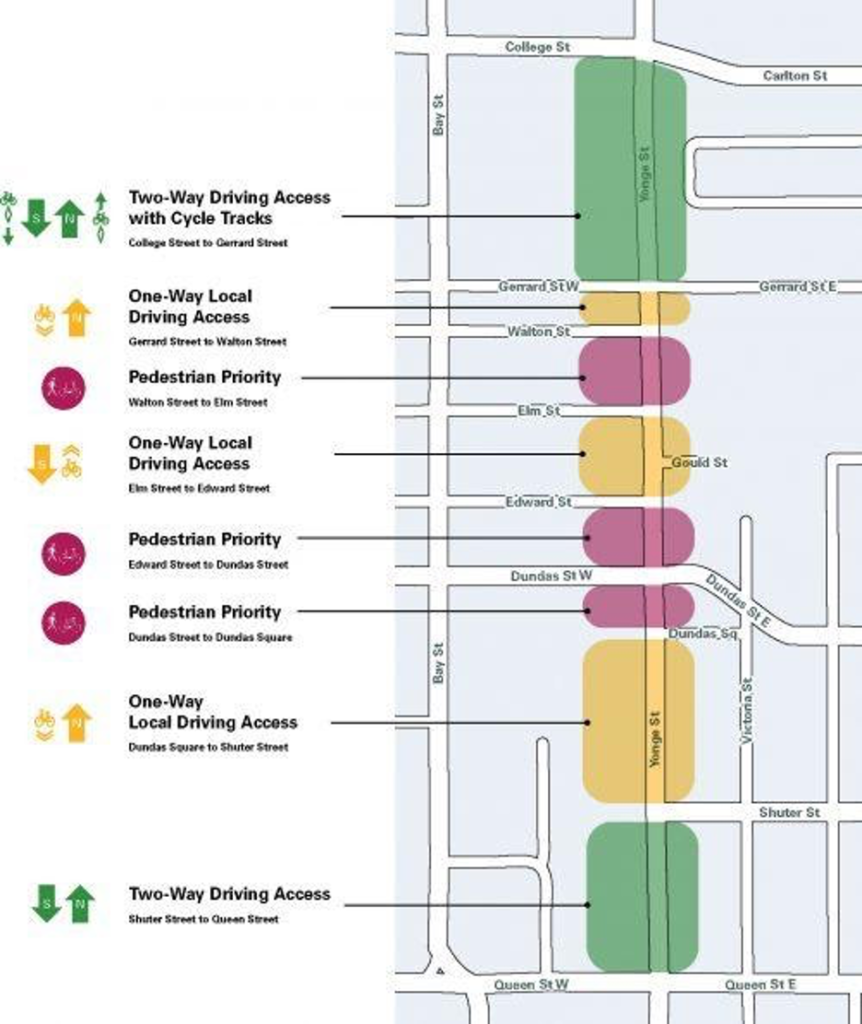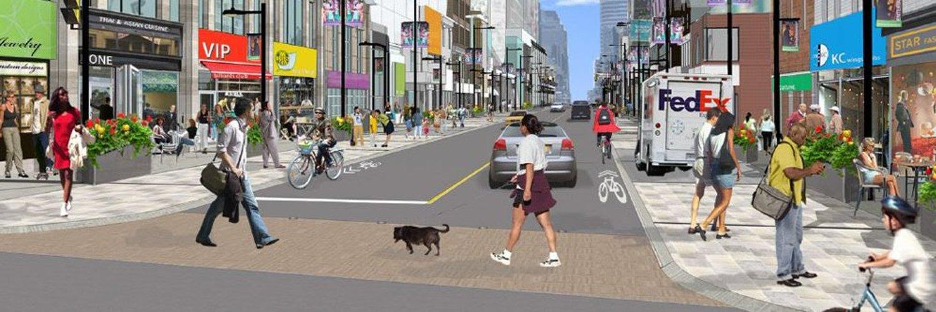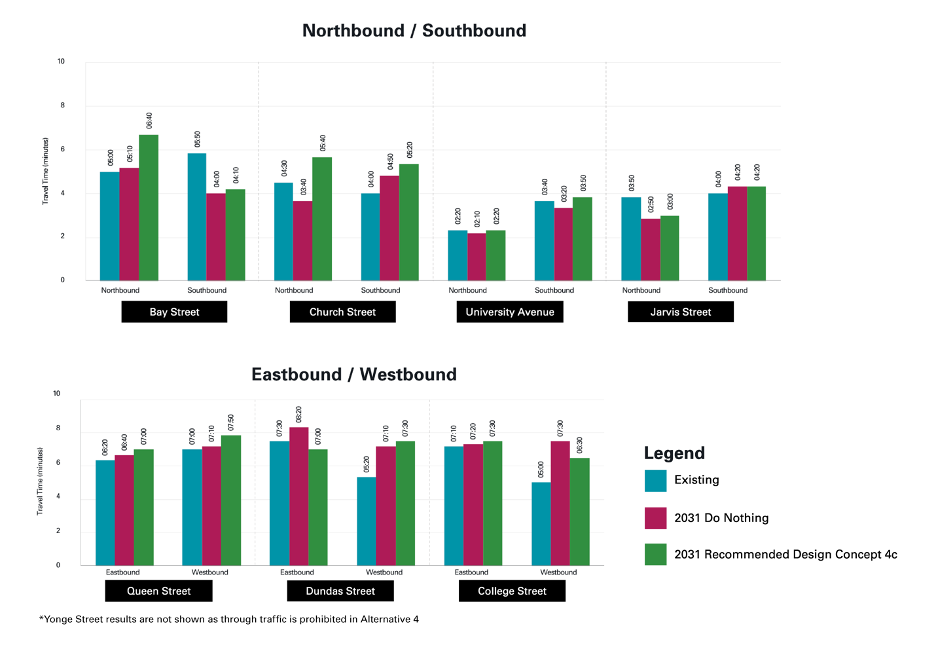The City of Toronto unveils plans to make the iconic thoroughfare more pedestrian- and cyclist-friendly

A new design by YongeTOmorrow recommends Yonge Street’s traffic flow should include widening the sidewalks, more space for cyclists, and the reduction of car traffic between Queen and College Street. The City of Toronto’s initiative to improve the pedestrian experience on Yonge Street held its third public consultation on Wednesday.

local business owners and street users (Source: City of Toronto)
Design 4C, pictured above, was the top vote of the original 15 designs presented in previous talks with stakeholders, local business owners, and street users.
YongeTOmorrow project manager, Johanna Kyte, says this design will offer an enhanced pedestrian experience, make cycling a top priority and allow for deliveries and ride handling, all while maintaining space on sidewalks for patios and retail.
“This construction provides us with an opportunity to re-consider the needs of everyone,” says Kyte, “both short and long-term.”
Kyte says a main driver for this project was data indicating that 50 to 75 per cent of Yonge Street commuters are walking, cycling or taking transit, and that the number of people employed in the downtown core is projected to double by 2031.
The street is also due for major renovations, as a 100-year-old water main beneath the road needs replacing.
Claire Nelisher, project manager at Ryerson’s City Building Institute, agrees with Kyte that the allocation of space on Toronto’s main hub needs to be rebalanced, and says the model is a great step towards creating a pedestrian-first Yonge Street.
“It could transform not just how the street looks, but how the whole neighbourhood feels,” says Nelisher.

Renovations on the street might not start for at least two years, but an early concern about the project is a reduced traffic flow on nearby streets for the duration of construction. City of Toronto models predict that driving north on Church Street between Queen and College Street, could take two extra minutes while Yonge Street is under repair.

Another potential drawback of the project, says Nelisher, is that pedestrianization takes time to complete.
For example, Gould Street – a central street of Ryerson’s campus – has been in construction for several months. The City projects YongeTOmorrow’s design to be completed by 2022, with construction finished by 2025.
Nelisher says that once both those streets are updated, however, it will result in a much greater campus experience at Ryerson.
“The project carries great potential to enhance student pedestrian experience,” she says, “and also to reaffirm the connection between Ryerson and the city on its doorstep.”
Alex Payne, a first-year law student at Ryerson, said she would relish safer walking space near campus. Payne completed her undergrad at the University of Windsor, where part of the central intersection, Sunset Avenue, became restricted to cars to render the campus safer and more practical for students.
“It made the campus feel like its own thing and I liked that,” she says. “I think making (Yonge Street) more pedestrian would help create that kind of campus vibe.”
Some local businesses are thrilled about the prospect of a more inviting street. Kasia Bobrowska, an employee at Vans, expects that more pedestrian space will lead to more customers at her store.
“I’d love to see Yonge be made for pedestrians like The Kensington Market eventually,” she says. “It’s such an inviting atmosphere for people and shoppers. There could be vendors on the streets… it could create so much opportunity.”
YongeTOmorrow’s next step is to send this proposed design to the city’s Infrastructure and Environment Committee in December for further consideration and adjustments.
Meanwhile, residents have until Sept. 30 to submit their feedback about the design.
Questionnaires can be completed and feedback can be submitted at https://www.toronto.ca/community-people/get-involved/public-consultations/infrastructure-projects/yonge-downtown/
This article may have been created with the use of AI tools such as
